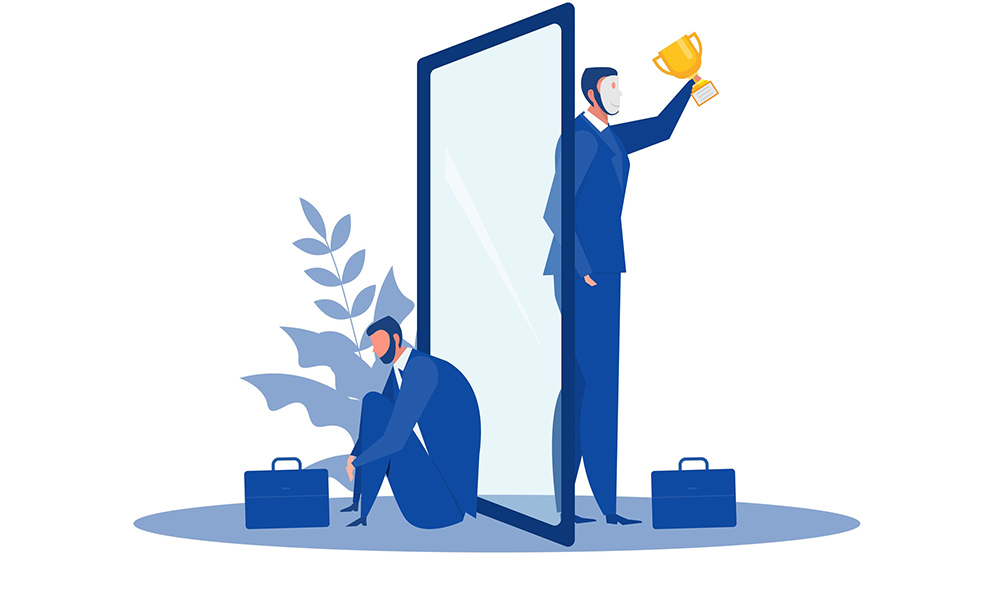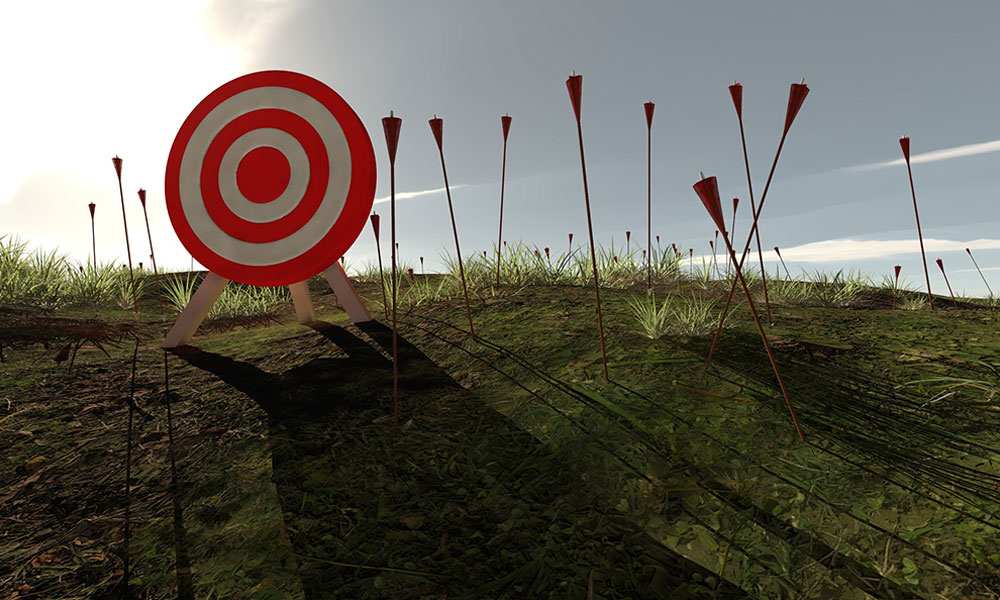I’m biased, you’re biased, we’re all biased. According to massive amounts of modern research, there’s no escaping the everyday reality of how biased we are. Yet, the more I read about how our minds work, the more I get into a bit of denial mode. Not me, I think. I’m not biased, am I? I truly see people for who they are. Those studies don’t apply to me.
You’re probably thinking this too, right about now.
This, unfortunately, is untrue. We all come with our own set of biases—an inevitable result of both nature and nurture. In an evolutionary context, we are programmed to gravitate towards “people like us”. This is a lingering inheritance from our Stone Age ancestors, who survived through a strict adherence to tribal loyalties, a rigid “us and them” mentality that stood them in good stead. While we have evolved in many ways, these ancient prejudices remain deeply rooted in our brains. Add to that the hundreds of stereotypes that we are exposed to in our daily lives, especially while growing up. Is it any wonder that some of these ideas get internalised, no matter how hard we strive to be neutral and rational?
The challenge is that people are more likely to encounter subtle forms of bias than overt ones. The blatant ones are relatively easy to identity. The more subtle or the unconscious ones are unfortunately much more frequent. In some fascinating work done by Google, researchers found that the human brain receives 11 million bits of information every moment. However, we can only consciously process 40 bits. So, our conscious mind is processing only a minuscule amount of information.
In her article, Unconscious Bias—Making Millions From Theory, published in The Huffington Post, Sylvana Storey defines an unconscious bias very succinctly:
“a bias that happens automatically, is outside of our control and is triggered by our brain making quick judgments and assessments of people and situations, influenced by our background, cultural environment and personal experiences”
So, what do these hidden prejudices have to do with our professional lives? Bias, even if it is unconscious, can play a pivotal role in the workplace and can hinder us from making objective decisions. Drawing from this, my message this week is on the inevitability of bias—and how to recognise and address it.
So, what fuels unconscious bias? The Google study talks about four triggers:
- Tasks –We associate certain tasks with a certain type of person
- Numbers – When looking at a group, we are more likely to use biases to analyse people in the outlying demographics
- Clarity – When information is lacking, our brains fill in the gaps with what we’re expecting
- Perceiver – A heightened emotional state can keep the conscious mind distracted
Even a small bias can have big consequences. From hiring to recognition and promotions, unconscious biases can hugely help or hinder an individual.
Take, for instance, the case of the Yale University researcher who sent out two resumes to the science department for consideration. The resumes were identical except for one detail: one applicant was names “John”, the other was named “Jennifer”. Despite their indistinguishable qualifications and education, the faculty gave “John” a higher rating and designated him a higher starting salary (This included women faculty members, by the way).
Now, this was a group of highly educated men and women who, when asked directly, would no doubt have said that they had no preference for male candidates—what’s more, most of them would truly believe this. This is why hidden bias is, in some ways, a greater enemy than blatant discrimination. It’s more difficult to identify and accept, and this makes it harder to change.
Each of us is made up of a set of identities in the social sphere: gender, ethnicity, state, religion, community, economic strata, education, and so on. Based on these classifications, we make assumptions about people, deeming them more or less intelligent, competent, agile, and so on. Even the language we speak or the food we put on our plates is rife with social implications, causing other people to slot us into certain categories and tag us with certain qualities (or the lack thereof). For instance, how do we view someone who speaks English with a very strong regional accent? Do we view a woman in a sari differently from a woman in a business suit? Does the colour of a person’s skin lead us to make certain assumptions? What about their dietary choice? And their last name?
These are uncomfortable questions with no easy answers. Moreover, each person’s bias baggage is unique. If you’d like to assess your implicit biases, try out Project Implicit, which offers a series of tests compiled by Harvard University. You can test yourself for a variety of prejudicial attitudes based on age, skin tone, weight, and so on. What you learn about yourself might surprise you. Researchers have consistently found that even people who strongly believe themselves to be absolutely neutral often turn out to have automatic hidden biases—just like the science faculty at Yale University.
Let’s say we accept that we are prejudiced in some ways and are able to pinpoint certain unconscious biases, perhaps previously unknown to us. Can we address this? Or are we stuck with our preferences, for better or worse? Here are some pointers for you to consider:
1. It starts with you
There is much that organisations can—and do—do to minimise the harmful effects of unconscious bias (more on that in a forthcoming post); at the same time, each of us has a responsibility as far as our own biases and actions are concerned. We have to hold ourselves accountable, be willing to question ourselves and ask for feedback.
At Godrej, this is a particularly relevant issue. The values of diversity and inclusiveness lie at the heart of what we stand for—and while at an organisation level, we make an effort to cultivate these qualities, each of us must be an active agent of transformation for us to truly succeed.
In his startlingly honest piece, Overcome Your Biases and Build a Great Team, Raj Gupta examines the issue of bias through the eyes of someone who may potentially be discriminated against at their workplace. As a young Indian who arrived in the US in 1968, armed with little besides an engineering degree, and went on to become the chairman and CEO of a global Fortune 300 company, Gupta provides valuable insights from the point of view of “the outsider” trying to break in:
“Significant responsibility lies with the individuals as well—and this lesson took time and effort for me to learn…. There is no place for doubts and cynicism. In my case, I had to slay my own demons over time: extreme deference to authority, super-careful reticence in expressing my views, the belief that only white or American men will get top positions.”
2. Build in more structure
In Outsmart Your Own Biases, authors Jack B. Soll, Katherine L. Milkman, and John W. Payne identify structuring as a way to discipline our tricky brains. A pre-determined roadmap or checklist reduces the possibility of irrelevancies and memory distortion due to unconscious bias, bringing us back to the criteria that truly count.
“Savvy hiring managers assess candidates by conducting structured interviews (they’re much more accurate predictors of performance than open-ended interviews). Because there’s a standard way to rate responses, people can be easily compared on various dimensions.”
For example, those who make hiring, assignment, or promotion decisions can try to tweak processes and add structure to beat their own biases. Take “blinding” for instance—a popular technique when it comes to recruitment, helping to minimise the influence of stereotypes (both negative and positive). Orchestras have uses this technique frequently for the past few decades, asking musicians to audition behind a screen to eliminate bias. In 1970, before orchestras used “blind” auditions, women made a mere five percent of the top five orchestras in the US. Today, the number has climbed into the upper thirties. These are tools that can be used in the world of business, too.
3. Communicate more effectively
How many times in a week do you think you are misunderstood by someone? And sometimes, it’s the simplest of things that can be misinterpreted. No wonder then, without proper communication, biases get magnified. Building rapport, asking questions and engaging in open dialogue allows us to know each other as people, rather than a set of social identities. So, the next time you catch yourself stereotyping a colleague, join the object of your assumptions for a chat over tea. It’s remarkable how one real conversation can change the entire dynamic. As leaders, it is also important that we create an environment where our team members feel comfortable raising any issues related to overt or unconscious biases.
4. Measure progress
In general, data is far less prone to unconscious bias than our own cognition. Therefore, collecting and using data to inform our decisions can reduce unconscious bias. Without data, we can’t really know what progress we are making. Data can also enable you to see patterns that you may not have been aware of. Google cites an example when in 2014, they realised that 77 percent of their signature Doodles (the ones on their home page they use to celebrate events, holidays and the birthdays of famous leaders and innovators), were of men. The team was shocked by this and began tracking the diversity of their commemorations.
One area where we have been trying to make more progress at Godrej, is collating, analysing and using data for our people decisions. We have been getting more systematic about hiring and selection, performance, promotions and compensation data to ensure that we are being fair and objective. Apart from HR data, data from our Godrej In-tune engagement survey can provide useful insights on how valued and included our team members are feeling, how fair our processes are and whether people feel appropriately recognised for their contributions. Analysing trends from this data could provide valuable pointers on how we can improve.
5. Make it part of your personal evolution
In their Harvard Business Review article, Why Subtle Bias Is So Often Worse than Blatant Discrimination, Eden King and Kristen Jones explain that awareness of personal bias—by itself—is not enough to bring about change. You need to commit to making this possible. Something so deep rooted requires a lot of introspection and probably even a fundamental shift in who you are.
“For example, practicing mindfulness, or the process of focusing on the present and observing one’s thoughts as events outside of the self, may help to reduce subtle bias. Another promising strategy is the use of empathy-related techniques like perspective taking, which prompts people to consider the experiences of individuals who are different from themselves.”
At the end of the day, here is the unvarnished truth: each of us is prejudiced, and we may never be able to completely vanquish our biases. We can, however, recognise and take concrete measures to change our behaviours. It takes time, effort and humility, but it’s certainly worth it. While this is certainly an ethical imperative, let’s not forget that it’s also good for business.
I look forward to hearing your thoughts.








Hi,
For most part of the article you talked about biases that occur in terms of people functions/recruitment etc. But what about the biases that occur in the actual work? What I mean is, say for example, a bias that a brand manager might have when taking a marketing decision for his brand. He might decide to go ahead with a certain product concept because unconsciously he is comfortable using that in his personal life. This, to an extent, may not be absolutely wrong because a lot of business decisions require intuition as much as they require data support. How do you think this can be tackled?
Shriya
Hi Shriya, thanks for your perspective. The challenge is that an overwhelming majority of our biases are unconscious. So, there is no silver bullet to tackling the kind of hidden bias that you are alluding to. A few ways to approach this would be for the person to be open to introspecting and questioning herself / himself if she / he feels this way to be able to try to be more objective (to the extent that is possible). The other approach that I have found useful is to surround oneself with people who genuine care about you and are willing to give open, honest feedback. As you mention, great business decisions require both strong inuition and analytics. The key is to have an objective framework for making decisions so that one is clear on the respective roles.
Hi Vivek,
Thanks for this brilliant article. I believe that biases both conscious and unconscious are really the biggest drivers of decision making and hence it becomes very important to be aware of them.
What I wanted to ask is this, are long held beliefs for eg, “Eating non-vegetarian food makes you more violent” or “People will always take advantage of you unless you are careful enough” also examples of biases? If yes, can these also be dealt in a similar manner?
Thanks,
Akash
Thanks a lot, Akash. You are raising an important question. I think there is a distinction between beliefs and biases. However, it is important that our beliefs don’t lead to us having a confirmatory or a cognitive bias against how we deal with or treat other individuals. We certainly all have our own beliefs – it is important for those beliefs not to lead to biases in our behavior when we deal with other people.